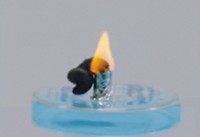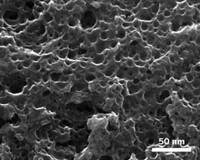Advertisement
Grab your lab coat. Let's get started
Welcome!
Welcome!
Create an account below to get 6 C&EN articles per month, receive newsletters and more - all free.
It seems this is your first time logging in online. Please enter the following information to continue.
As an ACS member you automatically get access to this site. All we need is few more details to create your reading experience.
Not you? Sign in with a different account.
Not you? Sign in with a different account.
ERROR 1
ERROR 1
ERROR 2
ERROR 2
ERROR 2
ERROR 2
ERROR 2
Password and Confirm password must match.
If you have an ACS member number, please enter it here so we can link this account to your membership. (optional)
ERROR 2
ACS values your privacy. By submitting your information, you are gaining access to C&EN and subscribing to our weekly newsletter. We use the information you provide to make your reading experience better, and we will never sell your data to third party members.
Materials
Storing High-Pressure Gas In Nanotubes
Ice crystals function as valves, enabling carbon nanotubes to serve as high-pressure hydrogen tanks
by Mitch Jacoby
June 17, 2013
| A version of this story appeared in
Volume 91, Issue 24
Hydrogen’s allure as a renewable and environmentally friendly transportation fuel spurred more than a decade of intensive research aimed at overcoming the challenges posed by automotive applications. But storing enough hydrogen aboard a vehicle to make the lightweight compound a practical fuel remains challenging. Standard high-pressure steel tanks are far too heavy, but carbon nanotubes may help reduce the weight, according to a study in Energy Technology (2013, DOI: 10.1002/ente.201300039). Woon-Ming Lau and Ka-Wai Wong of China Academy of Engineering Physics, Chengdu, and coworkers report that carbon nanotubes can be pressurized with 5 megapascals of hydrogen and sealed with ice crystals that function like tiny valves. Ice forms via self-assembly of water molecules that aggregate at COOH groups at the nanotube openings, the researchers explain. They note that the results show that the nanotubes can be used repeatedly to store and release hydrogen with minimal leakage by exposing the tubes to water and high-pressure hydrogen and alternately lowering and raising the temperature to form and then melt the ice.




Join the conversation
Contact the reporter
Submit a Letter to the Editor for publication
Engage with us on Twitter